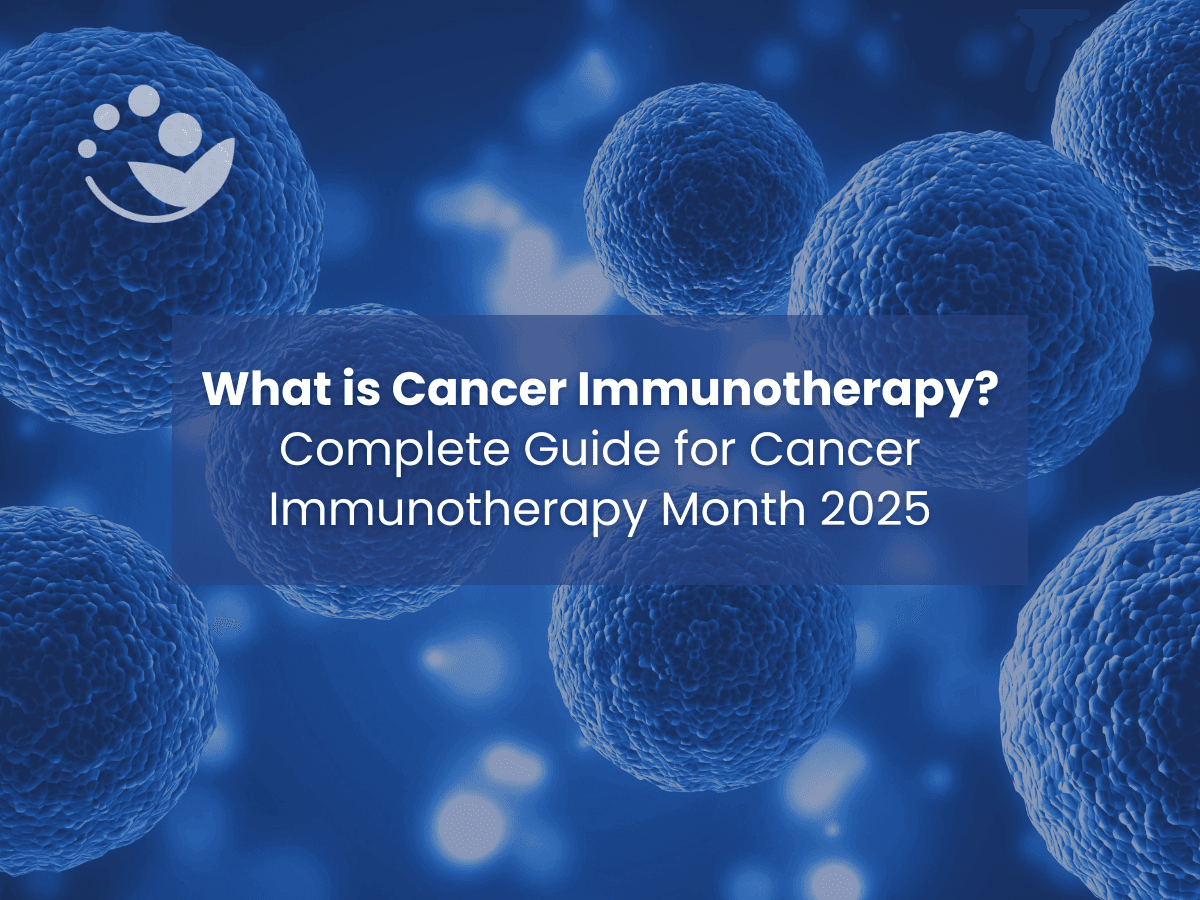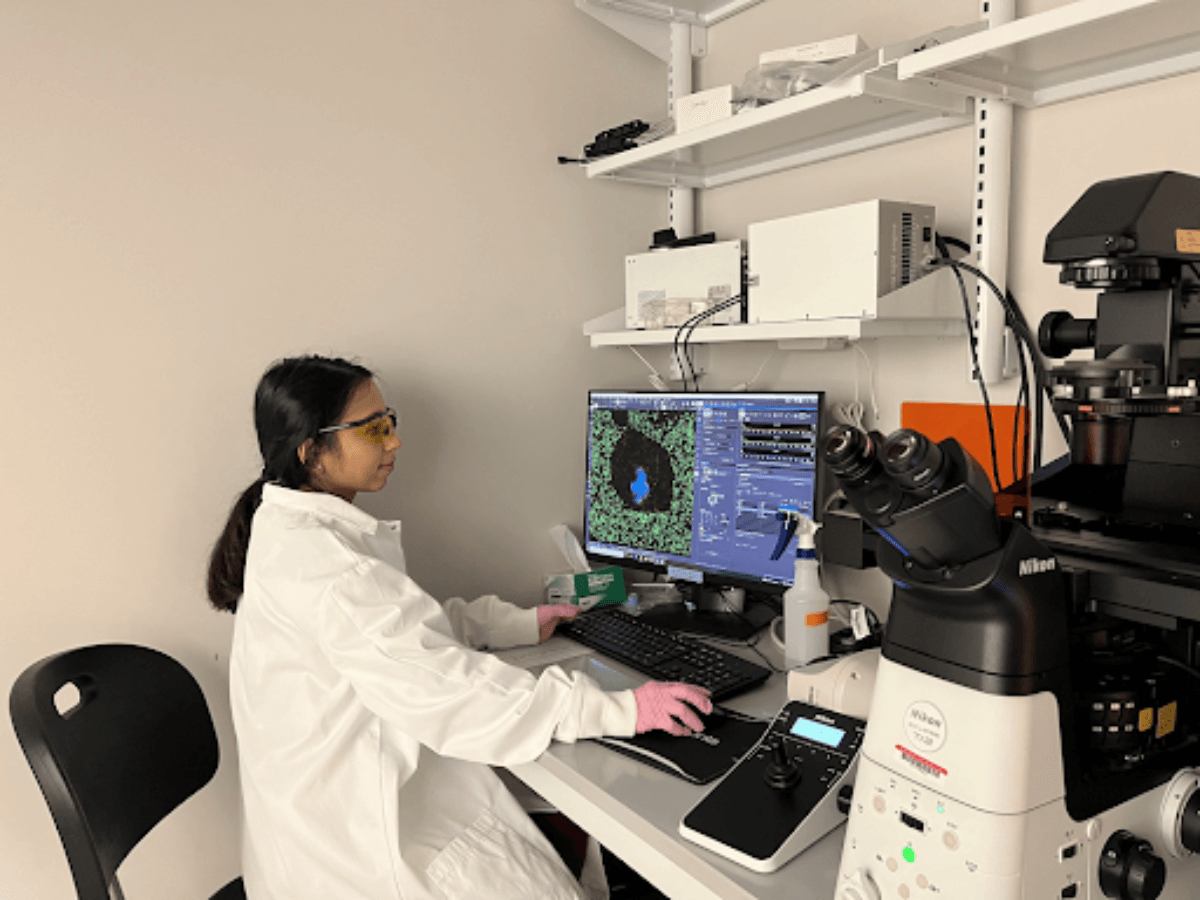
The Cancer News
AN AUTHORITATIVE RESOURCE FOR EVERYTHING ABOUT CANCER
What is Cancer Immunotherapy? Complete Guide for Cancer Immunotherapy Month 2025

What if the key to curing cancer is already inside us?
Cancer immunotherapy has recently surged into the spotlight, but its development and impact have been years in the making. Established by the Cancer Research Institute, Cancer Immunotherapy Month aims to educate the public, raise awareness, and drive fundraising efforts to support the fight against cancer. The creation of this awareness month was inspired by a major milestone in immunotherapy: the FDA’s landmark approval of the first immune checkpoint inhibitor in 2011.
Expert Insights on Cellular Immunotherapy
Dr. Indumathy Varadarajan, a hematologist-oncologist at UVA Health who specializes in cellular therapies, underscores the transformative potential of this treatment:
Cellular immunotherapy is a remarkably powerful option that holds the potential to cure diseases that were once considered fatal. While the process may seem intimidating or daunting at first, experienced centers have dedicated health care teams to guide patients step by step. And when it works, it can be life-changing. It may be the only thing that offers a cure and the chance to live a full life.
What is Cancer Immunotherapy?
Cancer Immunotherapy describes a form of treatment that uses the body’s own immune system to delay or eliminate cancer growth. The first scientific attempts to alter patients’ immune systems to treat cancer can be traced back to two German physicians in the 19th century, who observed a reduction in tumor size following infection. However, it was not until 1891 that the first immune-based cancer treatment was developed. William Bradley Coley, now known as the Father of Immunotherapy, successfully injected live and inactivated bacterial strains into patient tumors. He achieved complete remission in several malignancies, despite not fully understanding the mechanism of action behind what became known as “Coley’s toxins,” which also carried health risks due to infection.
In the early 2000s, scientists Douglas Hanahan and Robert Weinberg published a seminal article titled The Hallmarks of Cancer, outlining six major biological traits of cancer. Since then, the list of hallmarks has expanded, with one emerging hallmark being the ability of cancer cells to avoid immune destruction. This capacity for tumors to actively escape immune surveillance continues to be a key area of exploration in cancer immunotherapy research.
How Does the Immune System Work?
The immune system is made up of several organs, cells, and proteins that work together to protect the body from harmful substances that can make you sick. It’s always working in the background, which is why it often goes unnoticed until it is weakened, unable to respond effectively, or encounters a germ for the first time. That is when illness occurs.
There are two main types of immune response: the non-specific (innate) immune system and the specific (adaptive) immune system.
The nonspecific immune system provides a general defense against harmful substances. It includes components like natural killer cells, phagocytes (germ-eating cells), basophils, eosinophils, and mast cells. Physical barriers such as the skin and mucous membranes are also part of innate immunity. In contrast, the specific immune system is made up of T cells and B cells, which recognize and eliminate particular foreign substances. This arm of the immune system is responsible for building lasting immunity.
The immune system is activated by tags that mark substances or cells as foreign. These tags are called antigens. For example, many bacteria and viruses carry antigens on their surfaces. When these pathogens enter the body and come into contact with immune cells, the cells are triggered to mount a response and eliminate the invaders.
But how do cancer cells avoid immune detection, even though they are harmful?
Cancer cells use multiple mechanisms to stay hidden from the immune system. They can reduce antigen presentation, suppress immune surveillance, and build dense physical barriers (called stroma) to shield themselves. Some cancer cells even acquire mutations that allow them to mimic normal cells, making it harder for the immune system to recognize them as threats.
Different Forms of Cancer Immunotherapy
1. Adoptive Cell Therapy (ACT)
ACT involves the use of T-cells to eliminate cancer cells and can take three primary forms: tumor-infiltrating lymphocytes (TILs), engineered T-cell receptors (TCRs), and chimeric antigen receptor T-cells (CAR T-cells). For TIL therapy, immune cells are extracted directly from a patient’s tumor, expanded in the lab, and then reinfused to boost the patient’s anti-cancer immune response. In engineered TCR therapy, T-cells are genetically modified to express specific antigen receptors that help them recognize and target cancer cell "tags." Similarly, in CAR T-cell therapy, a patient's T-cells are reengineered to detect and destroy cancer cells more effectively. These enhanced T-cells are then reinfused into the patient.
2. Immune Checkpoint Inhibitors
This form of immunotherapy works by blocking immune checkpoints, intrinsic "brakes" on T-cells that prevent overactivation of the immune system. In the tumor microenvironment, these checkpoints (such as CTLA-4, PD-1, and PD-L1) are often overexpressed, weakening the immune response against cancer. Drugs that block CTLA-4 and PD-1 have shown effectiveness across several cancer types.
3. Targeted Monoclonal Antibodies
This approach uses antibodies designed to specifically target antigens on cancer cells. For example, monoclonal antibodies that target the epidermal growth factor receptor (EGFR), which is often overexpressed in head and neck cancers, have been effective as standalone treatments or when combined with radiotherapy.
4. Bispecific T Cell Engagers (BiTEs)
These engineered therapies are designed to bind two different antigens at the same time, typically one on a tumor cell and another on an immune cell. This dual-binding ability helps bring cancer-fighting immune cells directly to tumor cells, enhancing the body’s natural ability to target and destroy cancer.
5. Oncolytic Virus Therapy
Oncolytic virus therapy uses genetically modified viruses to infect and destroy tumor cells. This process also creates an inflammatory environment that triggers a broader immune response. The first FDA-approved oncolytic virus therapy, T-VEC, was approved in 2015 for the treatment of melanoma.
6. Cancer Vaccines
There are two main types of cancer vaccines. Prophylactic vaccines aim to prevent cancer by reducing incidence and mortality; for example, the HPV vaccine (Gardasil) prevents cervical cancer. Therapeutic vaccines, on the other hand, are given to patients who already have cancer to enhance their immune system’s ability to fight the disease.
Challenges in Cancer Immunotherapy
Cancer immunotherapy has made significant strides, yet several challenges remain. A major hurdle is the variability in patient responses, with only a subset benefiting from treatments like immune checkpoint inhibitors. Other challenges, such as tumor heterogeneity and immune evasion mechanisms, may further complicate treatment efficacy. To support personalized therapeutic approaches, predictive biomarkers for treatment response and toxicity have been developed. However, the tools to measure the diverse internal and external factors affecting patient outcomes need broader utilization. Additionally, existing preclinical models often fail to accurately replicate human tumor-immune interactions, limiting translational success. Challenges in therapy production, high costs, and regulatory hurdles further obstruct the development and accessibility of novel therapies. These issues were core topics of discussion during the Access to Cellular Therapy session at the Binaytara’s Summit on Cancer Health Disparities (SCHD). Addressing these challenges will be crucial for advancing the field and improving patient outcomes.
Disparities in Cancer Immunotherapy
Cancer immunotherapy can be life-saving for cancer patients. But not everyone has the same chance to get it. For example, black patients are less than half as likely as White patients to receive CAR T-cell therapy, even after accounting for things like income and where they live. Then there are the practical hurdles, like needing to travel to a specialized center, speaking a language other than English, or not having the right insurance or a place to stay during treatment. All of these barriers add up. And they mean that far too many patients who might benefit from cancer immunotherapy never get the chance.
Age and gender also play a role in determining immunotherapy treatment outcomes. Studies have speculated that male patients could benefit more from Immune Checkpoint Inhibitor (ICI) treatment than female patients. Similarly, it has been observed that patients who are 62 and older may respond better to ICIs than those who are younger.
Celebrating Cancer Immunotherapy Month
In 2013, cancer immunotherapy was voted “breakthrough of the year” by Science and has since revolutionized the field of oncology, improving patient outcomes. Cancer Immunotherapy Month is a way for CRI to highlight its long-standing commitment to advancing the field. Continued research, education, and funding are essential, and this month was created to help sustain that momentum. Throughout June, CRI is offering several educational opportunities to share knowledge, spark conversation, and explore what’s next in immunotherapy.
Binaytara is also helping healthcare professionals stay current with the latest developments in cancer immunotherapy. Its newest free CME-accredited course on Oncoblast, Managing CAR T and Bispecific Therapies: A Case-Based Review, uses interactive cases to walk through patient selection, toxicity management, and supportive care strategies for those receiving CAR T-cell and bispecific antibody therapies.
By working together, we can help shape the future of cancer care, moving closer to a world that is immune to cancer.
Works Discussed
Institute for Quality and Efficiency in Health Care (IQWiG). (2023, June 6). In brief: How does the immune system work? InformedHealth.org. https://www.ncbi.nlm.nih.gov/books/NBK279364/
-
Dobosz, P., & Dzieciątkowski, T. (2019). The Intriguing History of Cancer Immunotherapy. Frontiers in immunology, 10, 2965. https://doi.org/10.3389/fimmu.2019.02965
-
Sahu, M., & Suryawanshi, H. (2021). Immunotherapy: The future of cancer treatment. Journal of oral and maxillofacial pathology : JOMFP, 25(2), 371. https://doi.org/10.4103/0973-029X.325257
-
BeCAR T Solutions. (2024, April 2). Breaking barriers: Addressing disparities in CAR T-cell therapy access. BeCARiS Publishing. https://becarispublishing.com/digital-content/blog-post/breaking-barriers-addressing-disparities-car-t-cell-therapy-access





